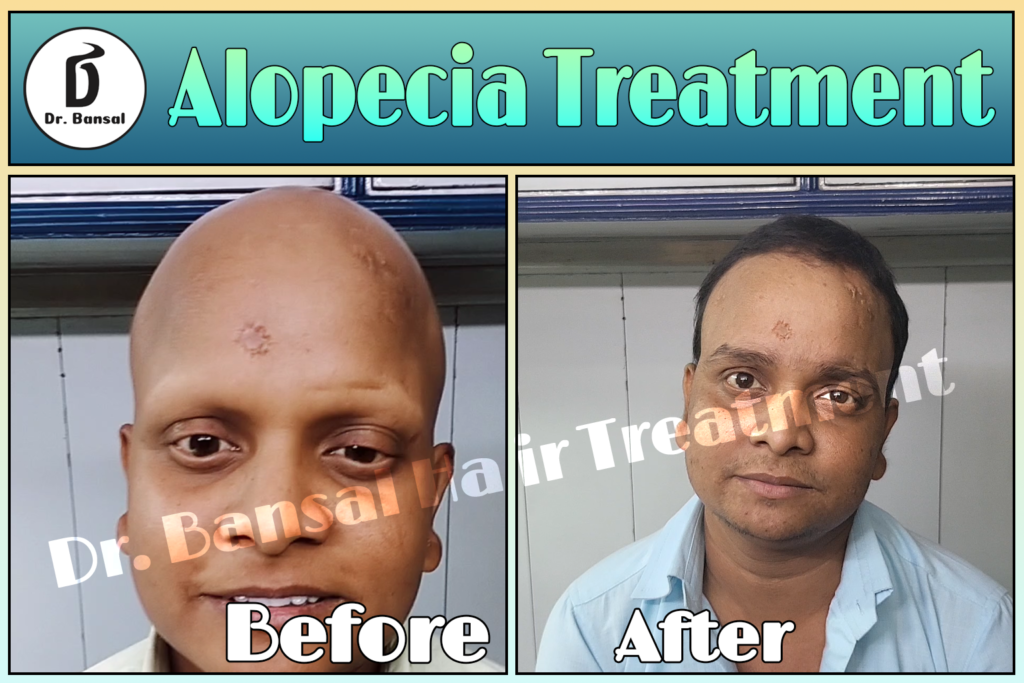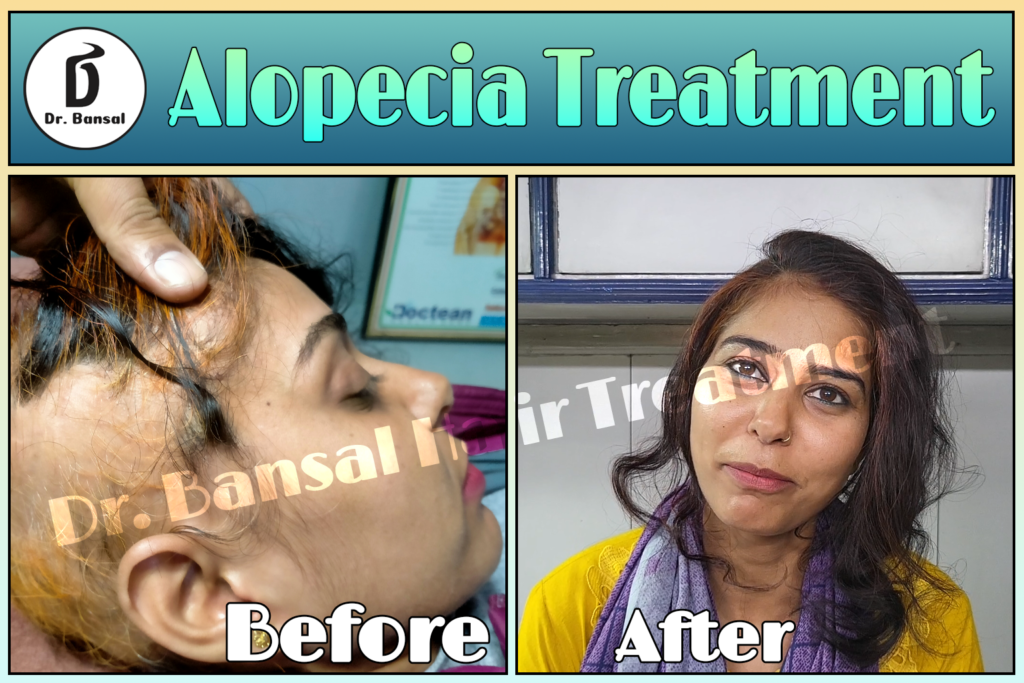Understanding Hair Loss Region And Solution: Causes and Solutions by Dr. Bansal




Hair loss, medically known as alopecia, is a condition that affects millions of people worldwide. It can have profound impacts on self-esteem, social interactions, and overall mental well-being. Hair Loss Region And Solution While hair loss is commonly associated with aging, it can occur at any age and for a myriad of reasons. Dr. Bansal has dedicated his practice to understanding the complexities of hair loss and providing effective solutions tailored to individual needs. Hair Loss Region And Solution
Thank you for reading this post, don't forget to subscribe!Types of Hair Loss
Before discussing solutions, it’s crucial to understand the various types of hair loss:
- Androgenetic Alopecia (AGA): Commonly known as male or female pattern baldness, this genetic condition is characterized by gradual thinning and loss of hair. In men, it usually begins at the temples, while women often experience thinning across the scalp. Hair Loss Region And Solution
- Alopecia Areata: An autoimmune disorder where the immune system mistakenly attacks hair follicles, leading to round patches of hair loss. Hair Loss Region And Solution
- Telogen Effluvium: Often triggered by stress, hormonal changes, illness, or nutritional deficiencies, this condition causes temporary hair shedding.
- Traction Alopecia: Resulting from tight hairstyles that pull on the hair shaft, leading to hair loss along the hairline. Hair Loss Region And Solution
- Scarring Alopecia: Conditions such as lichen planopilaris lead to the destruction of hair follicles and scarring, preventing future hair growth. Hair Loss Region And Solution
Causes of Hair Loss
A comprehensive understanding of hair loss involves exploring its multifaceted causes:
1. Genetics
Genetic predisposition is one of the most common reasons for hair loss. If you have a family history of androgenetic alopecia, the likelihood of experiencing similar hair loss increases significantly. Hair Loss Region And Solution
2. Hormonal Changes
Hormonal imbalances due to pregnancy, childbirth, menopause, or thyroid issues can lead to hair thinning and loss. Conditions like Polycystic Ovary Syndrome (PCOS) can also contribute to hair loss in women. Hair Loss Region And Solution
3. Nutritional Deficiencies
Deficiencies in essential nutrients including iron, zinc, vitamins (particularly vitamins D and E), and proteins can adversely affect hair health, leading to thinning and loss.
4. Stress
Chronic stress triggers hormonal changes that can lead to hair shedding. Conditions such as telogen effluvium are often associated with high-stress situations or traumatic events.
5. Medical Conditions
Certain medical conditions, including autoimmune diseases (like lupus), diabetes, and scalp infections (such as ringworm), can contribute to hair loss.
6. Medications
Certain medications may have side effects that include hair loss. These can include treatments for cancer, arthritis, depression, heart issues, and high blood pressure.
7. Lifestyle Choices
Unhealthy habits, such as smoking, excessive alcohol consumption, and poor dietary choices, can impair blood circulation and nutrient absorption, negatively impacting hair health.
The Psychological Impact of Hair Loss
Hair loss is not just a physical issue; it can have significant psychological implications. Hair Loss Region And Solution Many individuals experience feelings of embarrassment, loss of confidence, frustration, and anxiety. In some cases, it can even lead to depression. Understanding this aspect is essential for a holistic treatment approach.
Solutions for Hair Loss
Dr. Bansal employs a variety of evidence-based solutions tailored to each individual’s unique situation. Below are some of the most effective treatment options available:
1. Topical Treatments
- Minoxidil (Rogaine): This FDA-approved topical treatment is effective for both men and women. It stimulates blood circulation to the hair follicles, promoting hair growth and slowing down the rate of hair loss.
- Finasteride (Propecia): An oral prescription for men, this medication blocks the formation of DHT (dihydrotestosterone), a hormone linked to hair loss.
2. Platelet-Rich Plasma (PRP) Therapy
PRP therapy involves drawing a small amount of blood from the patient, processing it to concentrate the platelets, and then injecting it into the scalp. The growth factors in platelets can stimulate hair follicles to promote growth and improve thickness.
3. Hair Transplants
For individuals seeking more permanent solutions, hair transplantation may be the best option. This procedure involves moving hair follicles from one part of the body (typically the back of the scalp) to the thinning or balding areas. Two common techniques include:
- FUT (Follicular Unit Transplantation): Involves removing a strip of skin containing hair follicles and then grafting these follicles into the balding areas.
- FUE (Follicular Unit Extraction): Involves individually extracting hair follicles and transplanting them without the need for a linear incision.
4. Nutritional Supplements
Addressing nutritional deficiencies can play a vital role in hair health. Dr. Bansal may recommend specific supplements, such as biotin, iron, zinc, and omega-3 fatty acids, to promote healthier hair growth.
5. Lifestyle Changes
Encouraging patients to adopt a healthy lifestyle can significantly impact hair growth and overall well-being. Dr. Bansal emphasizes:
- A Balanced Diet: Incorporating a diet rich in fruits, vegetables, whole grains, and lean proteins.
- Regular Exercise: Physical activity improves blood circulation and overall health, which is beneficial for hair growth.
- Stress Management Techniques: Practicing mindfulness, yoga, meditation, and other relaxation techniques can help in managing stress-induced hair loss.
6. Alternative Therapies
Some patients may explore alternative therapies like acupuncture or aromatherapy to manage stress and promote relaxation, which can indirectly encourage healthier hair.
7. Cosmetic Options
For immediate cosmetic solutions, Dr. Bansal often recommends options like:
- Hair Fibers: Camouflaging thinning areas by using hair fibers that blend with existing hair.
- Wigs or Hairpieces: High-quality wigs can be a non-invasive option for those experiencing significant hair loss.
Ongoing Research and Future Directions
The field of hair restoration is ever-evolving. Dr. Bansal remains apprised of the latest advancements, including:
- Stem Cell Therapy: Research is ongoing into the use of stem cells to regenerate hair follicles.
- Gene Therapy: Exploring the potential of gene manipulation to combat genetic hair loss.
- New Medications: Continued investigation into new compounds that can effectively treat various forms of hair loss.
Conclusion
Hair loss can have a significant impact on an individual’s life, but there are various treatment options available. Dr. Bansal’s holistic and personalized approach ensures that each patient receives the care and attention they need to effectively manage and treat their hair loss.
Whether through medications, advanced treatments, or lifestyle modifications, there are solutions that can help individuals regain their confidence and improve their quality of life.
If you or someone you know is experiencing hair loss, consult with Dr. Bansal for a comprehensive assessment and personalized treatment plan. Hair Loss Region And Solution

